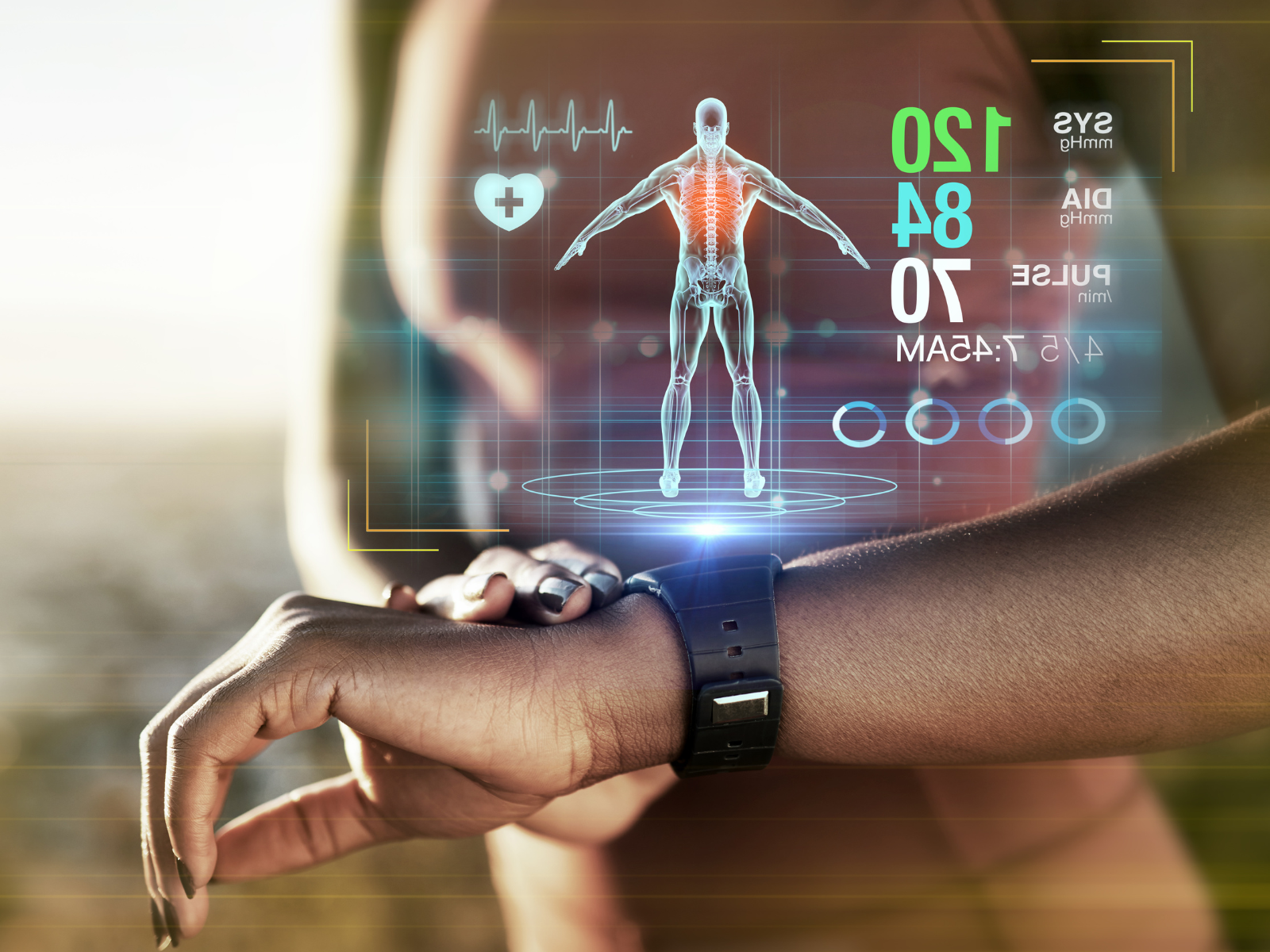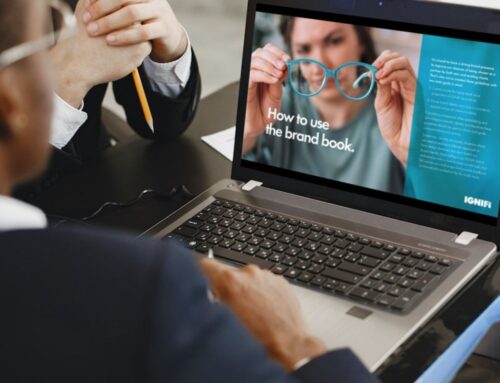
Back in 2018, we published a whitepaper discussing the growing trend of wearables in healthcare, along with the impact that this could potentially have on both patients and the healthcare system. In the time since that article was published, the use of wearable tech in healthcare has grown and diversified at a rapid speed.
In this blog, we take a fresh look at wearable tech and how newer developments have impacted the healthcare experience, both for patients and healthcare professionals.
How far has the technology come?
To understand how far wearable tech has come since our previous article, we can begin by reviewing the flagship devices that were around back in 2018 compared to now.
When we think of health-based wearables, we tend to think of the standard fitness watch/tracker. In the summer of 2018, the most notable of these devices were the Versa and Ionic from Fitbit and the Apple Watch Series 3, with key tracking features covering:
- Heart rate monitoring – measuring both resting and active heart rate.
- Fitness-based parameters – including step count, manual activity recording and calories burned.
- Sleeping tracking – based on both sleep quality and total hours slept.
However, we were on the cusp of an important shift in the wearables landscape, as uptake of the all-encompassing smartwatch began accelerating, resulting in wearables moving from fitness fad to lifestyle staple.
These newer devices were designed to be worn continuously, throughout the day and night, tracking a wider range of everyday features in addition to the standard fitness parameters. This translated into users wearing their devices for the long-term, rather than just when they were doing a workout or going through a ‘health kick’. With data being recorded all day every day, we were now gaining insight into our general health, rather than just our exercise capabilities.
A whole new ballgame
Nowadays, the main players in the wearable market include a variety of manufacturers, such as Samsung, Apple, Fitbit and Garmin. While the features listed above still remain, new technology has allowed for the introduction of additional features such as:
- Optical heart rate sensors and electrocardiogram (ECG) sensors – resting heart rate (RHR) and heart rate variability (HRV; the time between heartbeats) can now be monitored, allowing for irregularities in heart rhythm to be identified.
- Blood oxygen saturation (SpO2) monitoring – a vital sign of overall health that was of particular interest during the COVID-19 pandemic.
- Temperature sensors – can assist with advanced menstrual cycle tracking.
- Breathing rate monitoring – valuable for analysing overall wellbeing.
- Fall detection – including an ability to contact the emergency services if you are unresponsive.
- Stress analysis – features range from generation of a daily stress score (based on factors such as HRV, RHR and sleep score) to an electrodermal activity (EDA) sensor that can monitor changes in sweat level and perform a ‘scan’ in order to give a stress reading at any one time.
When we consider the sophistication of the technology that has been squeezed into these small, every-day devices, it is pretty mind-blowing. It wasn’t long ago that we would consider a hospital setting as the only place to have an ECG. Similarly, I’m sure most of us will be familiar with a healthcare professional (HCP) using a clip-on device attached to our finger in order to measure our oxygen levels. These days, specialised medical technology that was once only available in a healthcare setting, is now being carried around on people’s wrists as a matter of course.
But it’s not just what we’re monitoring. It’s how the resulting data is used and interpreted. A big focus of today’s tech appears to be providing deeper insights into all of the existing metrics. For example, sleep tracking, heart rate and women’s health features are all becoming more specific and fleshed out and, as a result, this is producing an immense amount of health data.
Another change that we are seeing is the use of wearables in areas other than general health and fitness. For example, wearables exist to help diabetic patients monitor their blood-glucose levels,1 or to help women track their fertility.2 There are even products in development that aim to help supress the tremors caused by conditions like Parkinson’s disease.3

Have wearables changed the way we see our health?
Health wearables are now an integrated part of our lifestyle, with research predicting that as many as 535 million smartwatches will be shipped in 2027 – up from just 51 million in 2017. With the industry growing so rapidly, others have been quick to spot an opportunity when it comes to utilising the ever-increasing amount of data that these devices provide. A whole host of health and fitness apps have now been developed to work in conjunction with wearable tech – running apps, mindfulness apps, ECG apps, blood pressure apps, nutrition apps, disease management apps… the list goes on. Simply put, health wearables are no longer used in isolation.
But what impact are they actually having on the way we see our own health? Are we as a population gaining a deeper understanding of our bodies, or after a certain point does it just become information overload?
As a creator of patient-facing apps, our team at IGNIFI are keenly observing the landscape for answers to these questions. In any given scenario, what will be key is hitting the right balance of enlightenment and patient activation, alongside knowing when to leave things to the professionals.
Have wearables had an impact on how we communicate with our doctors?
One of the main concerns raised in our initial article was that, while wearables and the data they collect would appear to be an incredibly useful resource for physicians, the interest from HCPs appeared to be low. When surveyed, only around a third of doctors reported to be confident in recommending wearable devices to their patient.4 One of the main reasons for this hesitancy was concern around the accuracy of these devices5 – as an incorrect measurement is worse than no measurement at all.
One particular area in which there are high hopes for wearables is in the management of chronic conditions. This is of particular importance following the COVID-19 pandemic, and the growing interest in telehealth and remote healthcare. With concerns around both GPs’ availability and in-person contact for some patients following the pandemic, accuracy concerns notwithstanding, at-home health data collection is a promising area.
Several organisations are already collaborating in a clinical trial investigating the use of wearables throughout a patient’s journey with cancer. By providing a form of monitoring in the gap between GP and hospital cancer care, the EMBRaCE (Enhanced Monitoring for Better Recovery and Cancer Experience) project allows HCPs to continually assess the progress of their patients. It hopes to relieve patient anxiety, while also providing insights into how people cope with cancer treatment and what can be done to support their recovery on an individualised basis.6
Where do we go from here?
While we have seen the industry diversify, and even grow closer to a place in mainstream healthcare over the past few years, we still have a long way to go before these devices become a routine part of healthcare.
The biggest hurdle to face is likely the accuracy concerns and the resulting distrust from doctors. However, in an ideal world, where these devices could match the standard of hospital devices, wearables could be an excellent resource for our healthcare systems,7 providing both a means of preventative care and a way of remotely monitoring patients, and consequently reducing the strain on time-poor physicians.
This idea is already being trialled in some organisations, such as the Norfolk and Norwich University Hospitals (NNUH) NHS Foundation Trust, who have created a 24/7 ‘virtual ward’ designed to help patients recover in their own homes rather than in an in-patient ward, with the help of a wearable on-arm device that measures heart rate, SpO2, respiratory rates and more.7
It will be interesting to see where the industry will go from here, if further NHS trusts will follow in the NNUH’s footsteps, and if we will start to see wearable devices establish themselves as part of mainstream healthcare.8
As it stands, most apps are riddled with disclaimers about how they are not designed to diagnose or treat, but it feels almost inevitable that this will change and there will come a time whereby a huge spectrum of (regulated) apps and devices will assist us in managing our health.
Health wearable integration into mainstream healthcare might not just alter the logistics, efficiency and effectiveness of the system, it could also influence the way in which we communicate with patients. As a creative digital health agency, communicating with patients and facilitating dialogue between patients and HCPs (via apps and other channels) is a key part of what we do. Typically, patient-facing communications are focussed on information provision and awareness campaigns that drive patients to discuss matters with HCPs. But by giving the patient more control and insight, and by encouraging more of a partnership between patient and HCP, it will be interesting to see if the tone and language we use, as well as the sophistication and detail within the apps we develop, alters as a result.
But for now, we watch and wait.
Just a few years on from our last article and we can already see huge developments in the technology and functionality of wearables. It’s exciting to think, in another few years, how this capability will have been applied and, coupled with trend identification from mass data generation, the influence it may have already had on our health as a whole.
For more insights on human health, digital healthcare, marketing best practice and much more, please visit our blog.








